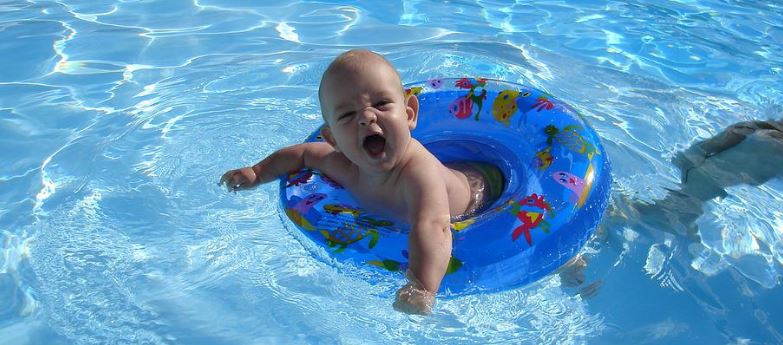Do you know that the best time to learn swimming is when you’re a baby? Several studies show that between the ages of 1 and 4 is the best time to learn swimming, although babies from 6 months can already begin parent and child water lessons.
So, swimming is natural and fun for babies. They just love to be in water.
However, as a parent you will often worry about your baby’s safety. This is where swimming aids come in.
Whether you have a pool in your home or you plan to use a public pool now that the world is somewhat back to normal, it might be a great idea to get some baby swimming aids to keep your baby safe in the water.
Baby swimming aids should be the next thing on your list after your baby’s swimming suit and nappies. Swimming aids like arm bands, floats, and swimming rings can support your baby through the learning process and ensure that they are safe.
When your baby has a swimming aid on, you will feel more confident about watching them in the water, which means you’ll give them the necessary freedom to learn the way they should.
If you are ready to take your baby swimming, then you should look out for swimming aids out there to purchase for your kids.
Remember that your baby can start swimming at any age after birth, especially any time from 6 months. Your kid doesn’t need to be vaccinated before swimming, although you should ensure that they are using a pool with clean and healthy water to avoid any skin irritations.
There are several baby pool floats available today on the market that provide shade and are safe for your infant to splash around with the rest of the family.
If you use a baby pool float that has a UV-blocking canopy and extra safety features, however, then your baby can splash and splish throughout the day. We break down the most important factors to consider before buying a baby pool float, then present five smart options for today’s babies. Check back soon for our pool party guide!
Baby Pool Float Considerations
We understand that many people might be tempted to buy a float that looks cute—it’s hard to resist an inflatable float that looks like an exotic animal! The fact is, parents must consider four factors carefully: the type of pool float, the safety features, the sun protection, and the convenience.
Type of Float
There are pool floats that let babies’ arms and legs tread water, wrapping around their necks. Although these products may promote motor development since they increase range of motion, experts advise avoiding them since they pose a drowning or suffocation risk. Baby and toddler swimming vests should also not be worn by young babies. If you want to avoid drowning, opt for non-inflatable floats that you can attach to your child’s chest or waist.
Safety Features
The safety of baby pool floats cannot be guaranteed. Make sure the pool float has additional safety features such as strong material that resists leaking, inner springs for stability, and seat straps for your children’s safety. Before using a float, check the weight and age limits, and be sure to supervise your baby!
The Mambobaby Butterfly Swim Float by Proactive Baby will allow you to spend pool time with your baby safely!
It comes with a safety buckled back-strap that keeps your baby safe and is easy to wear.
An integral sunshade canopy prevents UV ray damage to the baby! Your baby will be safe while learning to swim with their baby float.
Sun Protection
Babies under six months of age should be kept out of direct sunlight, according to the American Academy of Pediatrics (AAP). Furthermore, older babies with delicate skin should limit their sun exposure. In light of these facts, you should consider floats with UV-blocking shade canopies (alternatively, dress your child in lightweight full-coverage clothing and hats with wide brims).
Convenience
The top priority should be safety, but parents should not sacrifice functionality. Floats for baby pools should be inflatable and deflatable by mouth or hand. In addition, they should be foldable for easy transport and storage.
Compared with the traditional inflatable baby swimming float, the biggest advantage of the non-inflatable baby swimming ring is that there is no need to worry about bursting or air leakage, and it can ensure the safety of the baby. The non-inflatable baby swimming float is not afraid of sticking, and there is no need to worry about air leakage during use.
Finally, you should always supervise your baby at all times when he or she is near water. You should never let them out of your sight, regardless of whether they’re using a pool float!

